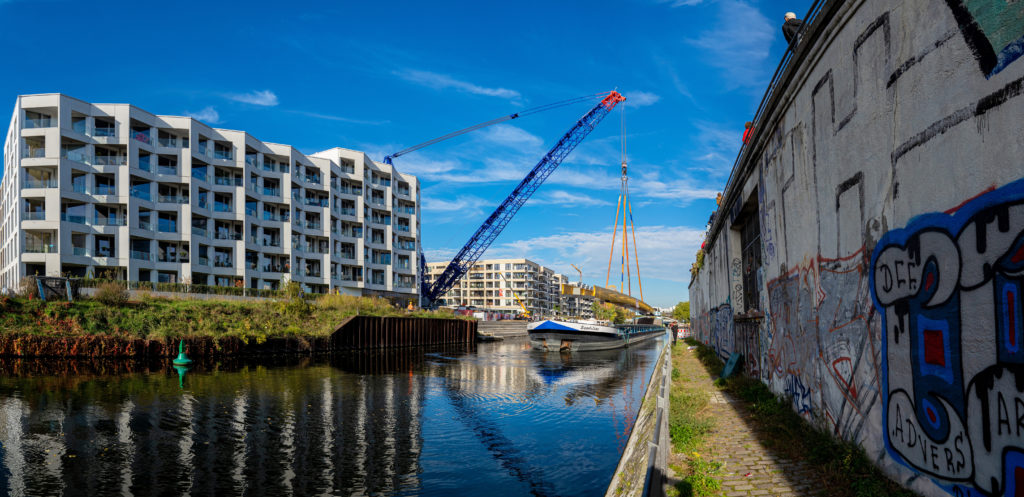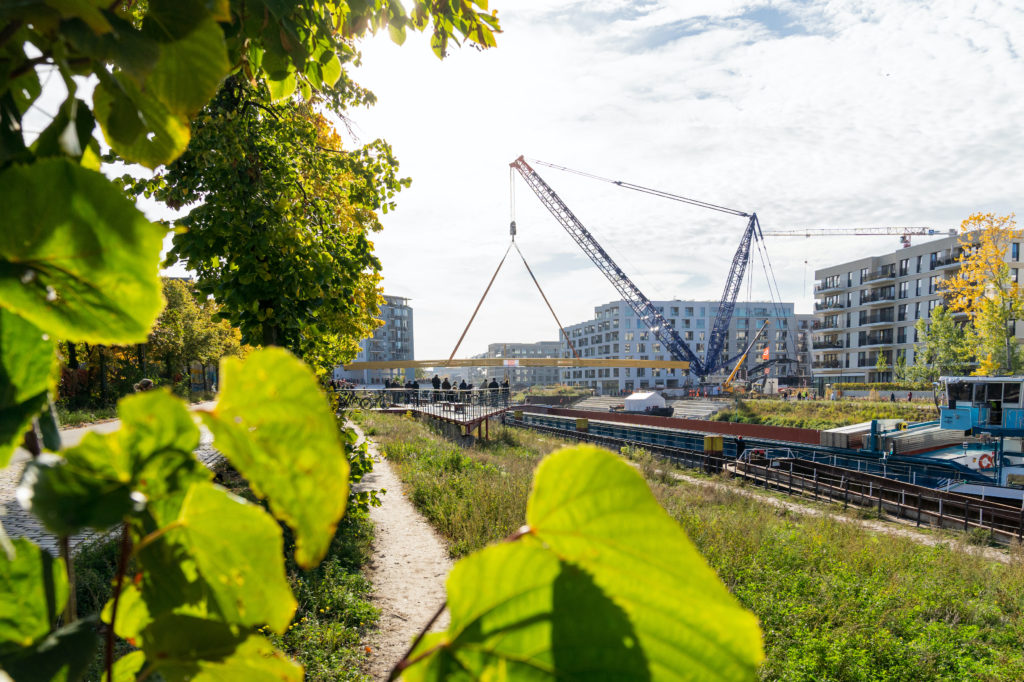The Golda-Meir-Steg installed in spectacular action over the Berlin-Spandau Shipping Canal

The Golda-Meir-Steg – Europacity's latest attraction – is a pedestrian and cycle bridge over the Spandau Shipping Canal. It is named after the former Israeli Prime Minister Golda Meir. The bridge appears to be made of gold, something her name also inspired. The Golda-Meir-Steg, along with the canal promenade, and the future public square, Otto-Weidt-Platz, forms a critical piece of infrastructure for visitors as it connects the once separated districts of Moabit and Mitte. This new centre of Europacity continues to provide a quality of life unmatched by other quarters of the city. The bridge, square, promenade, and open stone steps that descend to the canal create one of the most attractive recreational areas in Europacity.
Once authorities had granted permission for the bridge, preliminary work started on the site early in December 2019. The area needed to be fenced off, and car and canal traffic diverted, so that exploratory drilling could be carried out to check for unexploded Second World War ordnance. Once the borehole report had been given and the site was given the green light, sheet piling and jet grouting work began in February 2020 to create the excavation pits and lay the bridge foundations. In April 2020, workers completed the foundation piles under the bridge abutments, and the construction of the abutment reinforcement on the east bank started. In June 2020, the construction team installed the formwork and reinforcement of the first flight of stairs and built the bridge abutments.
The contract to build the bridge was awarded while the preparatory work was underway. Within six months, a construction company in the Saxonian town of Stützengrün had completed the construction of a 190-ton, elegant steel bridge. The 80-metre long and 4.5-metre wide bridge was then taken south to the port of Deggendorf, loaded onboard the barge Bandolino and sent on a 14-day, 1,600-km journey to Berlin. From Deggendorf, the bridge traversed the waterways across countless locks along the Rhine-Main-Danube Canal to Duisburg. Then it was shipped along the Mittelland Canal, up the Havel River, along the Spree River until it finally reached the Spandau Shipping Canal. On 22 October, the bridge was lifted off Bandolino by a crane equipped with a 300-ton counterweight and placed in position. The canal was temporarily closed to regular shipping traffic while this spectacular operation took place.
The column-free span of the bridge now arches gently over the canal. Construction will continue until the spring of 2021 when the bridge will open to the public and provide access to Kieler Strasse. On the east side of the canal, a set of steps up to a platform will provide access to the bridge. On the western side, the bridge will flow into the new public square designed by the landscape architects. Decorative elements have also been worked into the railings which can be illuminated at night and give the new structure a distinctive look.

